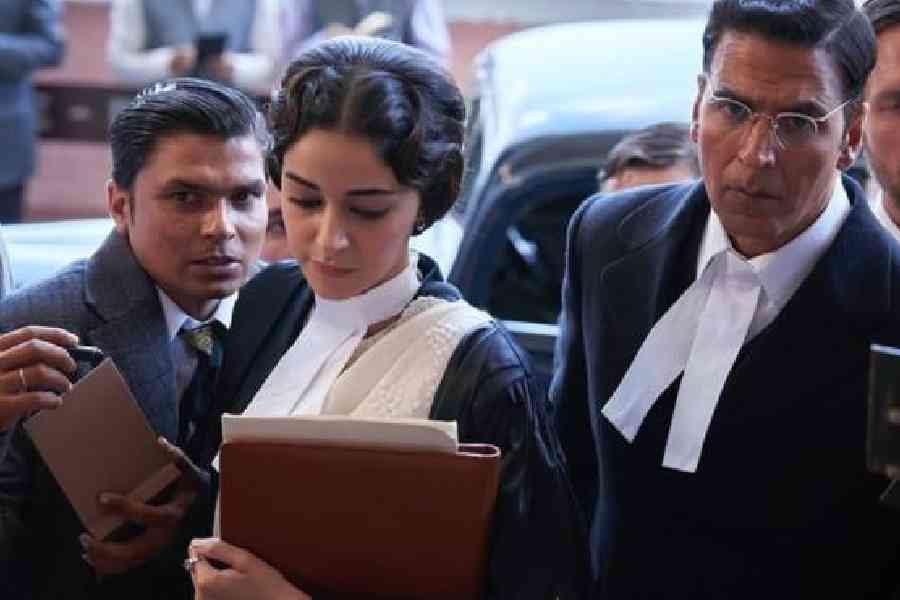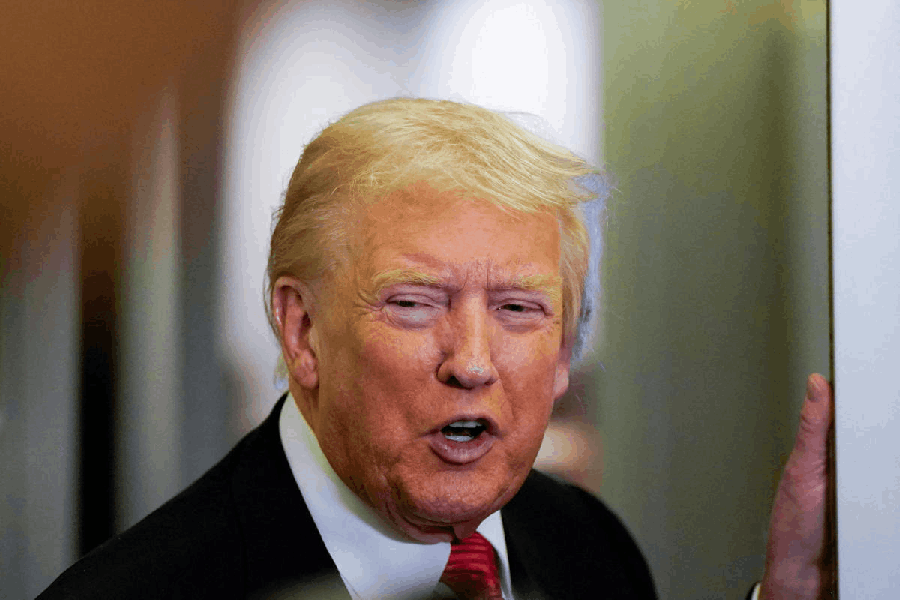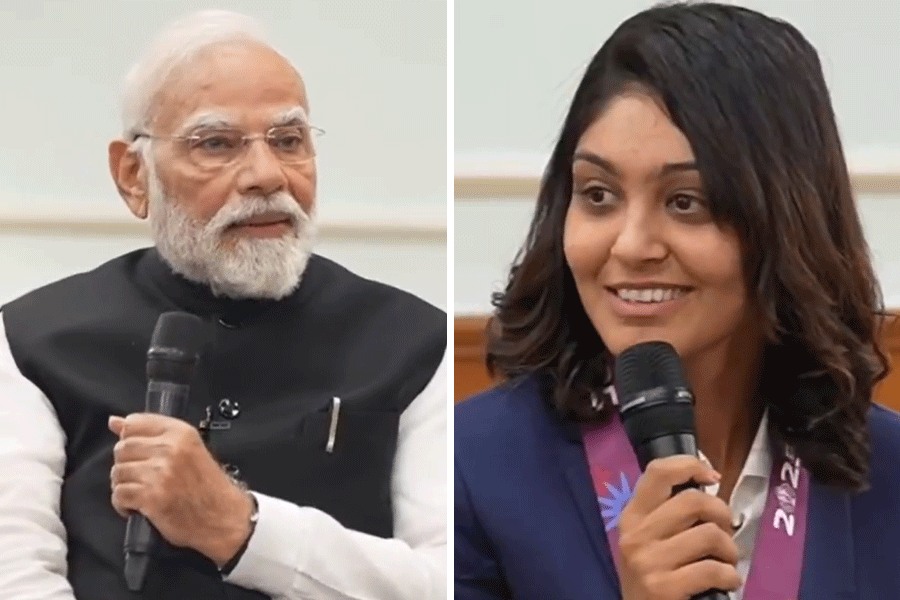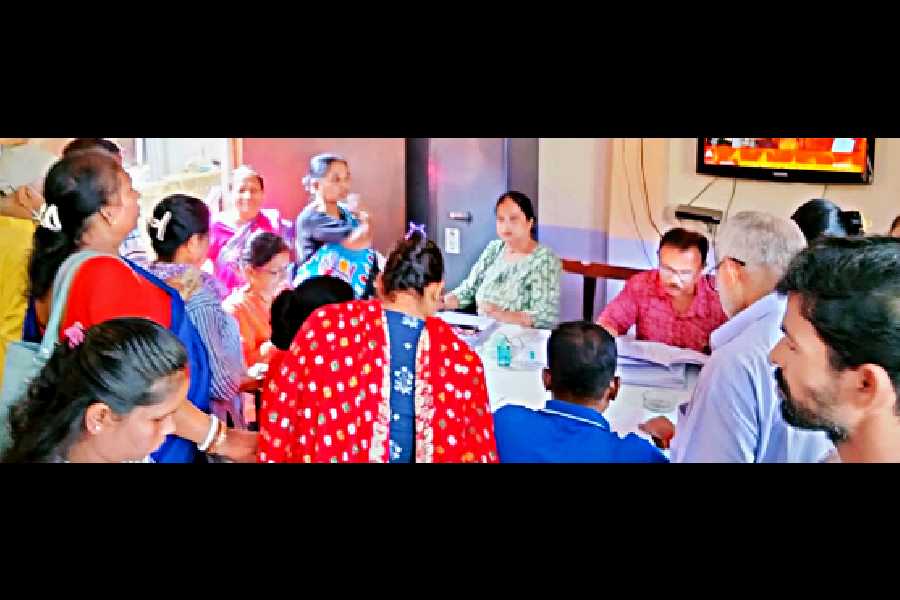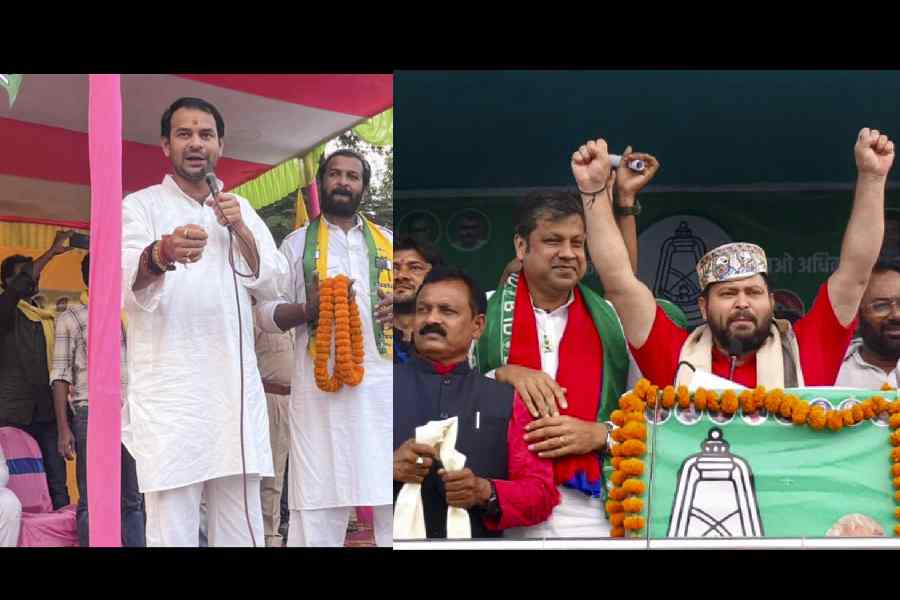Kesari Chapter 2, starring Akshay Kumar, R. Madhavan and Ananya Panday, recounts the aftermath of the Jallianwala Bagh massacre through a bitter battle fought in court by lawyer and statesman C. Sankaran Nair (played by Akshay) who took on the might of the British Empire. A week after its release, t2 decoded the film — including the criticism that has come its way — with its debutant director Karan Singh Tyagi.
It has been more than a week since Kesari Chapter 2 released. There has been appreciation as well as criticism. What has it been like for you?
I have received thousands of messages and calls. It has been so heartwarming. My assistants have sent me reaction videos of audiences in theatres who have been clapping and whistling. I was sent a video from Hyderabad where the audience was shouting ‘Inquilab Zindabad’ as Sankaran Nair (played by Akshay Kumar) delivered his last monologue. The rage expressed by Nair in the last scene has struck a chord.
The emotional scenes of the (Jallianwala Bagh) massacre have impacted audiences. I received a message from a Sikh family where the son said that he saw his father cry for the first time. The father is from Amritsar and he was holding in a lot of his emotions over the years... he just broke down after watching the film.
The film has done a business of about ₹50-crore so far, which is not proportionate to the reactions coming in as well as the fact that you have a big name like Akshay Kumar in the film. How do you explain that?
Honestly, I feel that the numbers are steadily rising. I also feel that Kesari Chapter 2 will no longer remain just a movie... it is on its way to becoming a movement. We are already seeing the trends.
What spurred the idea of the film?
I read the book called The Case That Shook The Empire (The Case That Shook the Empire: One Man’s Fight for the Truth), which is written by Sankaran Nair’s great grandson Raghu Palat and his wife (Pushpa Palat). I was riveted because the book says something new about the Jallianwala Bagh massacre and its aftermath. It puts forth the argument that the massacre was a planned conspiracy, that it was pre-meditated. There are many lesser-known details in the book... like how the Gorkha and Baloch soldiers were called in before the massacre took place. It talks about how an aeroplane flew over the park to ascertain whether enough people had assembled. A fake curfew was implemented just to label the martyrs as terrorists. Also, the fact that Sankaran Nair fought this case with all he had to bring awareness to the tragedy.
When I was reading all this, I saw a film in front of my eyes. I co-wrote the screenplay with Amritpal Singh Bindra, who is also a producer on the film, as well as Sumit Saxena, who is a fantastic writer. The three of us crafted the narrative and built the film from the ground up.
We went through extensive research. We read almost every book that was written on Jallianwala Bagh. There is so much literature about the incident which I want the world to know about. There is Kishwar Desai’s fabulous book called Jallianwala Bagh, 1919: The Real Story. There is V.N. Dutta’s book (Jallianwala Bagh), which puts forth the same argument that our movie does... that the massacre was a planned conspiracy to kill. When we collected all the research material and started creating the screenplay, we knew that we had a powerful story on our hands. Leo Media Collective, Amrit’s company, gave me the platform to mount my first film on this size and scale. He introduced me to Dharma Productions and Karan Johar. From there, we went from strength to strength.
Was it known from the beginning that this would be the second film in the Kesari franchise or did that idea evolve over time?
That evolved. In fact, it was Akshay sir’s idea to call the film Kesari Chapter 2. I thought it was a great suggestion because even the first instalment (Kesari, 2019) was a story of valour and courage. Kesari brought to light the unsung battle of a Sikh battalion (led by Ishar Singh, played by Akshay), where they took on the might of a much bigger British army. Kesari Chapter 2 is a spiritual sequel to the first film.In this film, too, we have told a story of bravery and valour. This is also a story of one man taking on the British empire. For me, kesari signifies the colour of revolution. I thought the title was perfect for our film.
How do you react to the fact that the film, despite being considered necessary viewing by audiences of all ages, has been given an ‘adults only’ certificate?
I have to respect the decision of the censor board... they have passed my film with zero cuts. They have certain regulations in place which warranted that we get an ‘A’ certificate. Having said that, I do want my film to be watched by every citizen of this country.
This looks like a difficult film to pull off for a first-time director. What would you pick as your biggest achievements in making Kesari Chapter 2?
Shooting the massacre sequence was tough, and I was happy with the approach we took, which was showing the carnage from the point of view of a 13-year-old Sikh boy who was right in the middle of it but escaped miraculously. Through him, I wanted audiences to feel as if they were inside the park, to have a very visceral experience. The sense of claustrophobia that the boy, Pargat, feels... the helplessness at being separated from his mother and sister... I wanted viewers to feel it and to have a very personal, intimate experience.
Also, when we show the massacre sequence for the second time, I was happy that we had the juxtaposition of Sankaran and Pargat’s lives... where Sankaran Nair is receiving his knighthood from the British empire and, on the other hand, Pargat’s life has been blown to bits by the same people. There is a scene where Sankaran Nair is carrying the royal sword, while Pargat is carrying his sister’s dead body. It is a sort of foreshadowing for the fact that these two forces will ultimately collide and come together.
The challenge lay in making the courtroom scenes robust, exciting and dramatic. That is where my actors brought in so much of their own personalities. They improvised quite a bit. That we were able to make the courtroom scenes entertaining and engaging was one of our biggest victories.
The film has been criticised for the distortion of facts in many instances. In the name of creative licence, it is being said that you have changed many things. How do you defend that?
With all due respect, I humbly disagree with the word ‘distortion’, and I vehemently disagree with the idea going around that we were cashing in on a nationalist wave or a nationalist sentiment. When you are compressing a case which lasted over a month into a two-hour narrative, certain calls have to be taken. We needed to compress timelines, because of which we combined characters. Whatever we have done was with the full knowledge and support of Sankaran Nair’s family.
The story of Kesari Chapter 2 is so powerful that there was no need to cash in on any nationalist sentiment. We were just staying true to the material. The reason why we made this film was to honour the sacrifice of the people who died at Jallianwala Bagh. We wanted to give their lives dignity. And we also wanted to honour and recognise Sankaran Nair’s struggle and bravery.
Movies on real-life people and incidents need not be photographs of that time, they need not be documentaries. They can be paintings. And when you paint, you have a certain sense of freedom to create characters, to compress timelines. And that is what we did. We were very mindful of not deviating from any factual information about the Jallianwala Bagh incident. Everything that you see in the film about Jallianwala Bagh are well documented in several books.
In your research of Sankaran Nair, what was the most incredible aspect of his personality that caught your attention?
Sankaran Nair was radical and revolutionary... he was known for irreverent statements. There is a chapter (in Palat’s book) which recounts his decision to quit the viceroy’s executive council. The viceroy of India at that time, Lord Chelmsford, wanted Nair to pick his successor before he left the council. Nair nonchalantly nominated the sweeper standing outside because he told the viceroy directly that he wanted only ‘yes’ men in his council.
Nair was known to utter many radical and revolutionary things to Englishmen who were in positions of power. That was an eye-opener for me and formed the basis of the final monologue which is delivered by him in the film.
What kind of films do you see yourself making?
I have grown up on cinema of the ’90s. I have idolised Rajkumar Santoshi, who has made powerful human dramas that were watched by the entire country, which had an impact and which spoke about injustices. I want my movies to be seen by everyone and to be reflective of the beautiful country that India is. I want them to show the struggles and the courage of the common men and women of this country.

